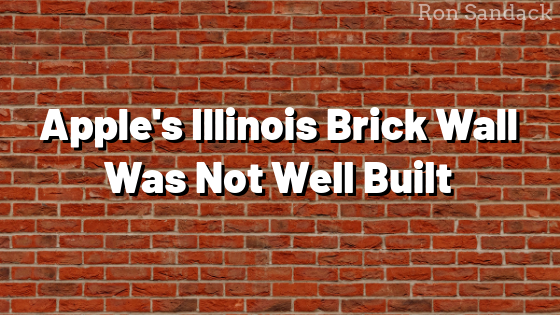This past month, the Supreme Court issued a decision that officially allows Apple to be sued for charging a commission on apps bought from developers for its devices, leading to high prices that are not considered competitive in a recent Apple vs Pepper case. But before we get into this case, we need to talk about something else: The Illinois Brick Doctrine. Why do we need to talk about building materials in regards to a tech giant? Because Apple seems to have tried to hide behind an Illinois Brick wall and the Supreme Court tore that down.
The Illinois Brick Doctrine was created during a court dispute in the early 70s. During this time, the government had filed charges against brick manufacturers in Chicago. These charges were based on the fact that they felt the manufacturers were fixing the prices of the brick higher because they would be used on a government project.
The brick manufacturers lashed back, however, stating that the government was not the original purchaser of the brick, so they could not sue for damages. Why? Because the government masons were the ones who bought the brick. All of this led to a “doctrine” that in short, says that indirect victims of fixed pricing, or some sort of pricing conspiracy cannot sue for damages. This would only lead to heightened amounts of litigation. It’s easiest to think of the Illinois Brick Doctrine as a check and balance for this.
But what does Apple have to do with any of this? In the Apple vs Pepper case, the claim is that Apple is fixing prices higher for iOS users since they must buy them through their App Store. Apple supposedly is charging an additional 30% of the sale price in commission from the developers which in turn is causing the prices to go up. And this is where Apple attempted to claim the Illinois Brick principle.
Apple said that since the customer was buying their app from a developer, and not Apple, they cannot be sued for damages. The Supreme Court did not buy this, mostly due to the way the App Store works. When a customer buys an app from Apple’s App Store, they are buying the app from Apple, not from the developer. Apple then takes it’s 30% and passes along the remaining revenue to the developer. This insertion as a retailer is what caused the Supreme Court to tear down their Brick Wall defense and opened the way for this pending litigation to commence.

